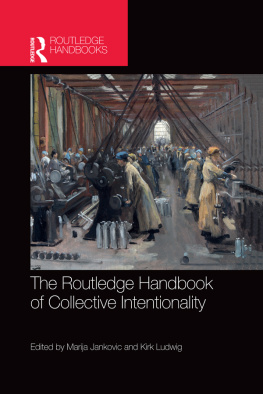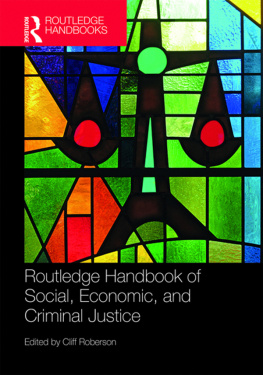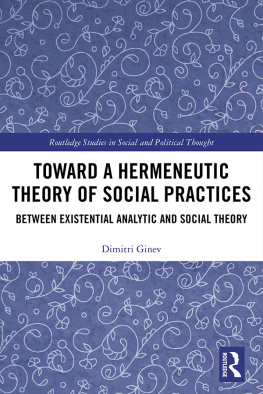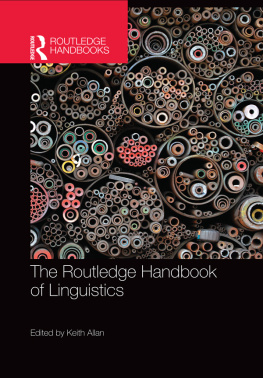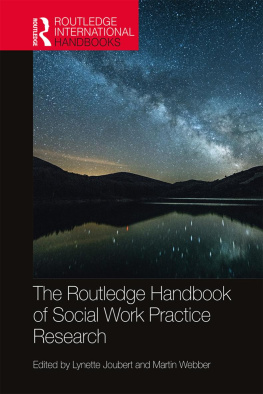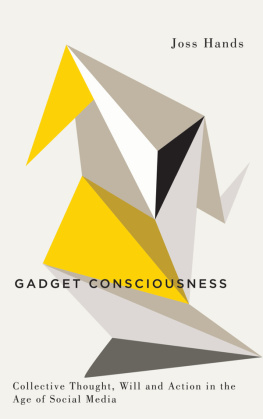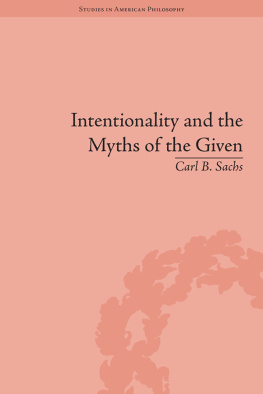VIII
Semantics of Collectivity
First Published 2018
by Routledge
711 Third Avenue, New York, NY 10017
and by Routledge
2 Park Square, Milton Park, Abingdon, Oxon, OX14 4RN
Routledge is an imprint of the Taylor & Francis Group, an informa business
2018 Taylor & Francis
The right of Marija Jankovic and Kirk Ludwig to be identified as the authors of the editorial material, and of the authors for their individual chapters, has been asserted in accordance with sections 77 and 78 of the Copyright, Designs and Patents Act 1988.
All rights reserved. No part of this book may be reprinted or reproduced or utilised in any form or by any electronic, mechanical, or other means, now known or hereafter invented, including photocopying and recording, or in any information storage or retrieval system, without permission in writing from the publishers.
Trademark notice: Product or corporate names may be trademarks or registered trademarks, and are used only for identification and explanation without intent to infringe.
Library of Congress Cataloging-in-Publication Data
A catalog record has been requested for this book
ISBN: 978-1-138-78363-8 (hbk)
ISBN: 978-1-3157-6857-1 (ebk)
Typeset in Minion Pro and Frutiger
by Sunrise Setting Ltd., Brixham, UK
Marija Jankovic and Kirk Ludwig
The epistemology and rationality of groups, and their implications for our understanding of group agency, are an important focus of research on collective intentionality. Questions about the epistemology and rationality of groups come in both at the level of individual agents participating in joint action, and at the level of groups. At the level of individuals, for example, common knowledge among participating agents of their intentions and corresponding beliefs in success of joint action is often (though not always) cited as a precondition for shared intention, and so for joint intentional action. At the group level, we say that, for example, The tobacco companies knew and for most part accepted the evidence that cigarette smoking was a cause of cancer by the late 1950s. Scientific knowledge raises questions about both levels. It is the result of a massive coordinated effort by many people, often as members of large research teams or organizations, in an institutional environment designed for sharing information, duplicating experiments, and critically evaluating hypothesis and proposals. Arguably the knowledge that results cannot be analyzed exhaustively in terms of the aggregate knowledge of individual scientists.
Similarly, groups as well as individuals are evaluated as behaving rationally. A group may act irrationally, in the sense of acting in ways that are obviously incoherent given its goals, even though each of its members considered independently appears to be acting entirely rationally. Reasoning by participants in group action may also take an importantly different form, team reasoning, where individuals reason about what to do in relation to the teams goals or utility rather than purely individualistically. It has been argued that team reasoning is the key to resolving certain collective action dilemmas that classically characterized individualistic strategic reasoning cannot (such as the Hi-Lo game and the Prisoners Dilemmasee ), as well as to understanding what distinguishes shared intentions from an aggregate of individual intentions.
Notably, groups can solve problems or carry out tasks that their members cannot by way of a decomposition of the problem and a distribution of labor, frequently drawing on different skills from different members. These are cases of distributed cognitive systems that engage in complementary problem solving. It has been suggested that in these cases there are cognitive processes that take place not in individual heads but in the group as a whole, and sometimes this has been seen as a ground for claiming that something like a group mind is realized in the activities of individual agents coordinating their efforts in a way that is not merely aggregative.
Finally, judgment aggregation procedures in organizations often face problems when they must make a decision on a variety of different propositions that jointly bear on a decision the organization must make. This can give rise to what has been called the Discursive Dilemma. A three-member committee, for example, may be charged with making a recommendation on a merger with another corporation, where the merger is to be approved if it is low cost, synergistic, and profitable. Each member may believe that it meets a different pair of the criteria but not all three. So though a majority is in favor of each, none individually are in favor of all. They are faced with a question of how to aggregate their judgments, and one way, a premise first approach, results in a decision by the group that none of the individuals endorse. In this case, the organization appears procedurally to have some autonomy from the decisions of individuals. What are the implications for its status as an autonomous agent?
There are six chapters in , Common Knowledge, Collective Epistemology, Rationality and Cooperation, Team Reasoning: Controversies and Open Research Questions, Groups as Distributed Cognitive Systems, and Corporate Agency: The Lesson of the Discursive Dilemma.
In , Common Knowledge, Harvey Lederman distinguishes an informal notion of public information, information intuitively shared openly by everyone in a community, e.g. everyone knowing that Trump is President, from a formal notion of common knowledge, in which everyone knows that Trump is President, and everyone knows that everyone knows that everyone knows that Trump is President, and so on. Public information has been thought to play an important role in social interactions. Lederman focuses on a common assumption that public information and common knowledge coincide, that is, that the informal notion is correctly characterized as common knowledge, and surveys arguments on both sides of this debate.
, Collective Epistemology, by Jennifer Lackey, focuses on the question how we should understand a groups justifiably believing something. Lackey reviews four approaches to justified group belief: an inflationary approach, a deflationary approach, a Condorcet-inspired approach, and a group epistemic agent approach. Inflationary approaches treat groups as full-fledged epistemic agents. The main argument is that it appears that what individual members and a group are justified in believing come apart, e.g. a jury may be justified in believing a defendant innocent, because of rules of evidence, while its members are not. Deflationary approaches seek to understand talk of justified group belief in terms of the epistemic states and relations among their members. Summative accounts are in this sense deflationary: a group is justified in believing something just in case some (e.g. a majority) or all of its members do. Lackey develops problems for both approaches, and then turns to a Condorcet-inspired account on which group aggregation of judgments which are more reliable than individual judgments are identified with group justified beliefs. However, this would allow group justified beliefs even when no member of the group had any justification for her beliefs. The final approach seeks to respect two principles, first, that the justification of group beliefs depends on the justifications its members have, and, second, that it should pay attention to the evidential relations that exist among members beliefs and their bases.
In , Rationality and Cooperation, Paul Weirich develops accounts of collective rationality (acting in accord with members acting rationally) and of cooperation (working together for a common benefit) and then on their basis an account of the collective rationality of cooperation, that is, the conditions under which it is rational for a group to cooperate. Weirich argues that when conditions are ideal for joint action, cooperation is rationally required, and responds to objections to the account of collective rationality he introduces. He also considers its relation to team reasoning and circumstances in which there is the possibility of shifting coalitions.

